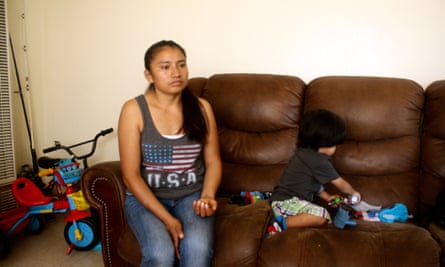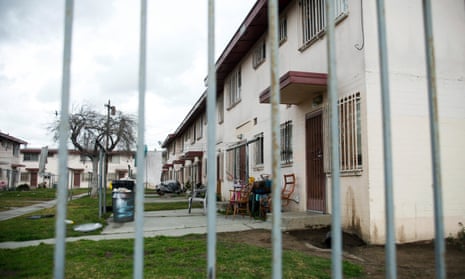It’s a sunny Saturday morning in South Los Angeles, but Nuvia Perez is keeping her three boys inside.
“They don’t go out to play,” said Perez, 37, whose front door faces a 21-acre former industrial site in the heart of Jordan Downs, a housing project.
“In the housing office, they say everything’s all right and not to worry,” said Perez in Spanish. “But they have found contamination.”
More than a year ago, family nurse practitioner Amanda Markusson noticed a cluster of elevated blood lead levels in the kids she treats near Jordan Downs and started recording test results.
Markusson says she has recorded blood lead levels as high as 13-15 micrograms per deciliter, well above the Centers for Disease Control and Prevention (CDC) threshold of 5 micrograms per deciliter. The World Health Organization says there is no known level of lead exposure that is considered safe.

“Over 300 children under the age of five currently reside at Jordan Downs, and they are at an increased risk for lead poisoning,” Markusson wrote in a statement. “As a healthcare provider in Watts, it is concerning to see a community put at increased risk for lead and heavy metal poisoning simply because of where they live.”
The test results recorded by Markusson are one of several indicators of elevated lead and arsenic levels surrounding a former industrial site, in a region with highest reported cases of lead poisoning in LA County.
Resident fears have only been heightened by the lead contamination problems that have blighted other low-income and minority communities in the US, including those in Flint, Michigan; and East Chicago, Indiana, where more than 1,000 people are now being forced out of their homes.
The US housing and urban development secretary recently proposed lowering the level of lead that must be detected in children’s blood before triggering federal cleanup action. The proposal would affect an estimated 2.9m subsidized and public housing units built before the country’s 1978 ban on residential lead paint.
For decades, the former industrial site in Jordan Downs hosted a steel mill and later a truck and storage repair facility, before the housing authority purchased the site in 2008 to begin a billion-dollar redevelopment project to transform the existing homes into 1,800 mixed-income units. In 2011, lead was detected there at levels as high as 22,000 parts per million (ppm). The residential soil lead threshold for cleanup in California is 80 ppm.
The site has since been cleaned up, and authorities have repeatedly assured the 2,700 residents that the environmental conditions at Jordan Downs do not pose an “immediate threat” to human health, and that no testing was necessary beyond the perimeter wall of the site.
But residents worry about the additional impact of planned demolition, and they see a recent spate of results as validation of their concerns.
Tests conducted last month at several schools within a few blocks of Jordan Downs found lead levels as high as 252 ppm. But Robert Laughton, director of the school district’s office of environmental health and safety, said the vast majority of the most elevated lead levels were found lower than six inches below the surface, “or in [other] areas inaccessible to people”.
After the test results, Laughton said the district covered all of the areas tested with mulch “as a temporary cover until we do the rest of the sampling”.
The Los Angeles housing authority also released the results this month from soil samples around buildings slated for demolition. While some samples returned with levels of lead and arsenic above the recommended thresholds, the levels did not pose an “unacceptable human health risk to the residents”, authorities said.
But possible lead contamination is only one part of a much wider pollution puzzle at Jordan Downs. Authorities have yet to map the source and full reach of a trichloroethylene (TCE) plume in the groundwater beneath the housing project. TCE, an industrial solvent, can be especially harmful to pregnant women if it seeps into homes through the floor.
Cleanup of an underground Exxon Mobil oil pipeline breach at the north-east corner of Jordan Downs has been ongoing for more than eight years. David Starr high school, perched on the south-east corner of Jordan Downs, has been the scene of multiple lead and arsenic cleanups over the past 12 years. Then there’s the toxic legacy from an old lead smelter that operated on the eastern portion of the housing project in the 50s and 60s.
“I think that what you’re seeing is a typical case of environmental racism,” said Thelmy Perez, housing collective coordinator at the nonprofit Los Angeles Community Action Network, who in April conducted soil tests around Jordan Downs with an XRF spectrometer. More than 50% of the samples taken screened over the 80 ppm cleanup threshold. The highest reading was 346 ppm.
“It’s pretty obvious that the residents are living in a toxic environment,” she said. “The problem is, I think [the authorities] see people of color living in a community like this, and they see a lack of power.”

Comments (…)
Sign in or create your Guardian account to join the discussion